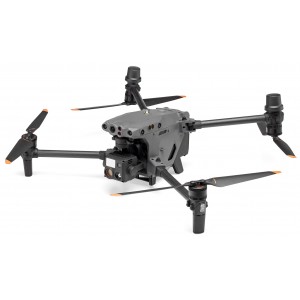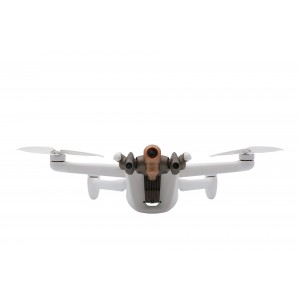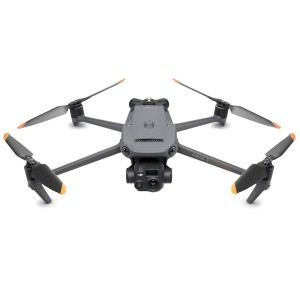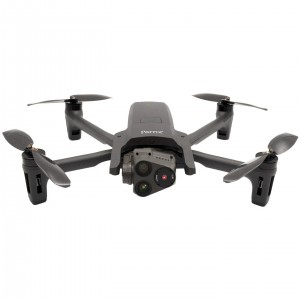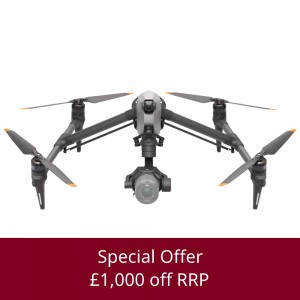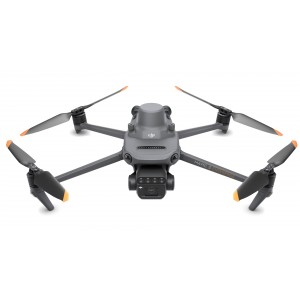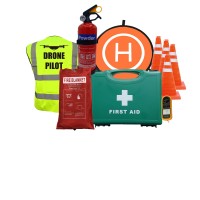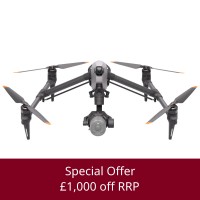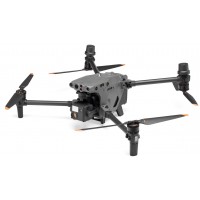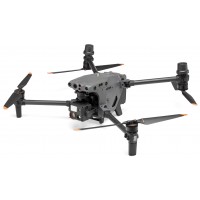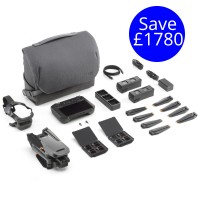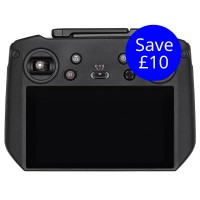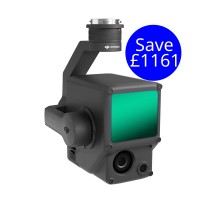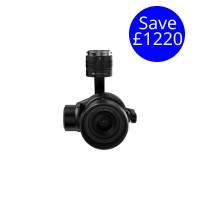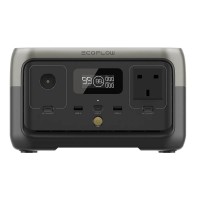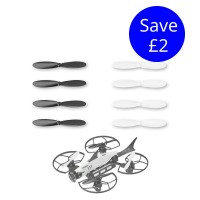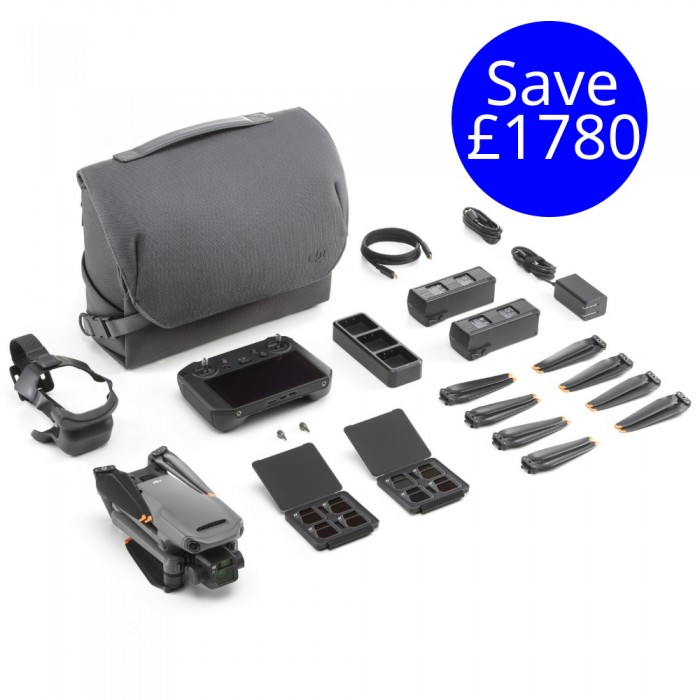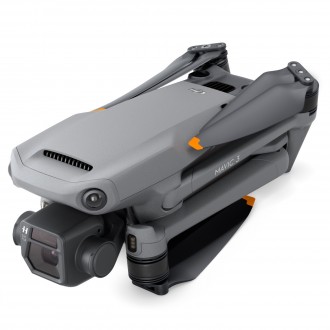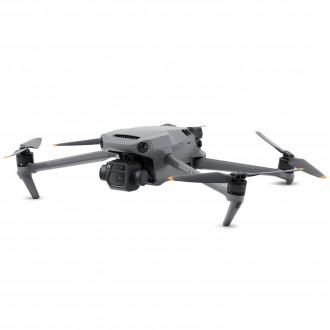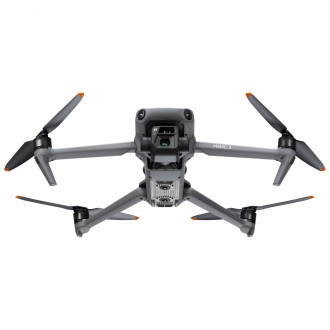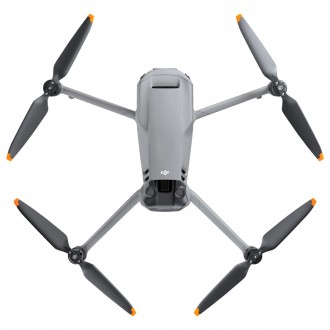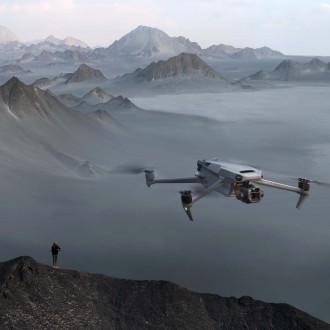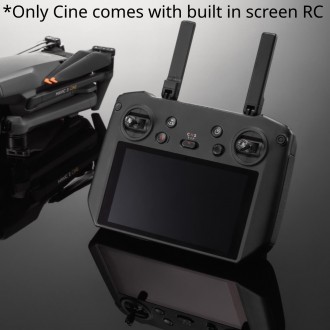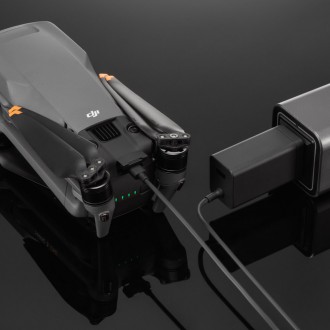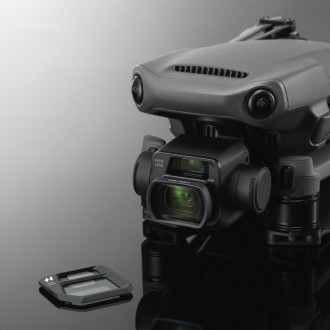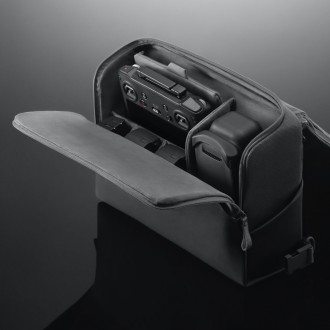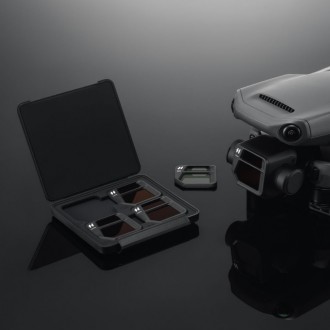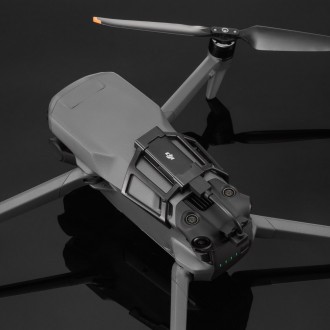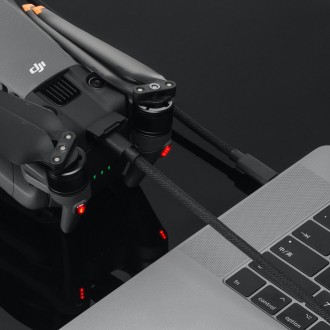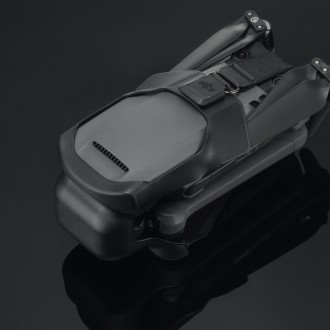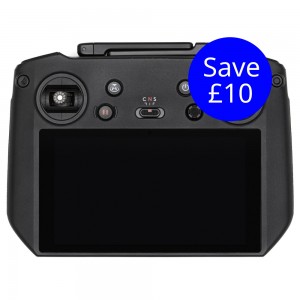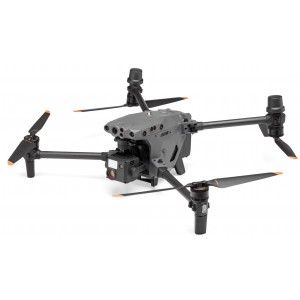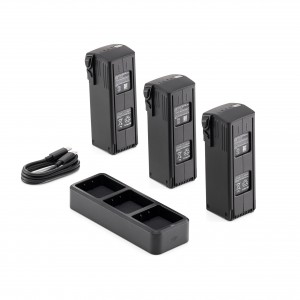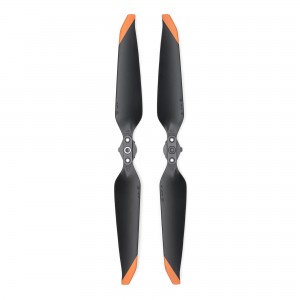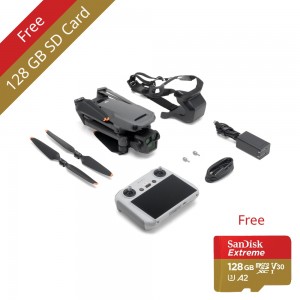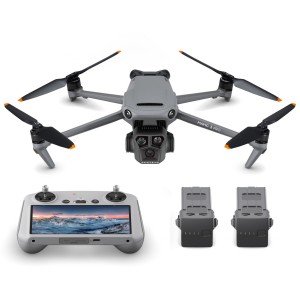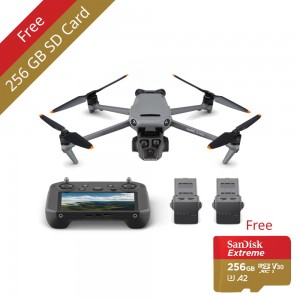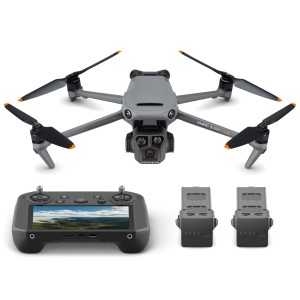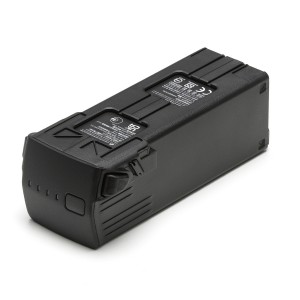DJI Mavic 3 Cine Combo with RC Pro Controller
- Brand: DJI
- Product Code: Mavic 3 Cine
- Availability: In Stock
- £4,279.00
-
£2,499.00
- Ex Tax:£2,082.50
Available Options
DJI Mavic 3 Cine
- 4/3 CMOS Hasselblad Camera
- 46 Minutes of Flight Time
- Omnidirectional Obstacle Sensing
- 8 km Max Transmission Range
- Advanced Return to Home
Capture stunning imagery with a legendary Hasselblad camera and enjoy smooth flight with omnidirectional obstacle sensing. Every improvement on Mavic 3 sets a higher standard for aerial photography. Fly with Mavic 3 and discover imaging above everything.
Omnidirectional Obstacle Sensing
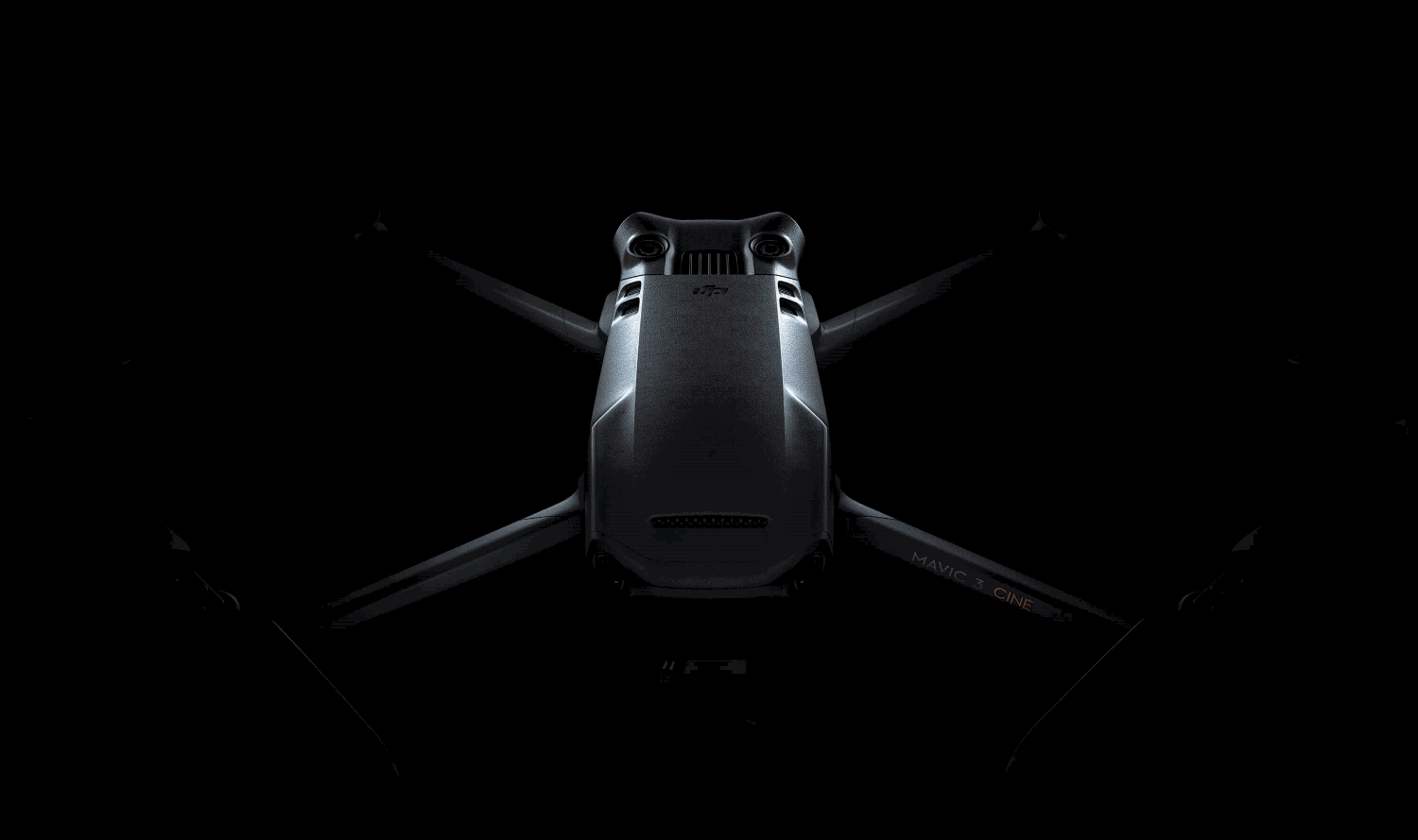
Two Cameras, Unlimited Possibilities
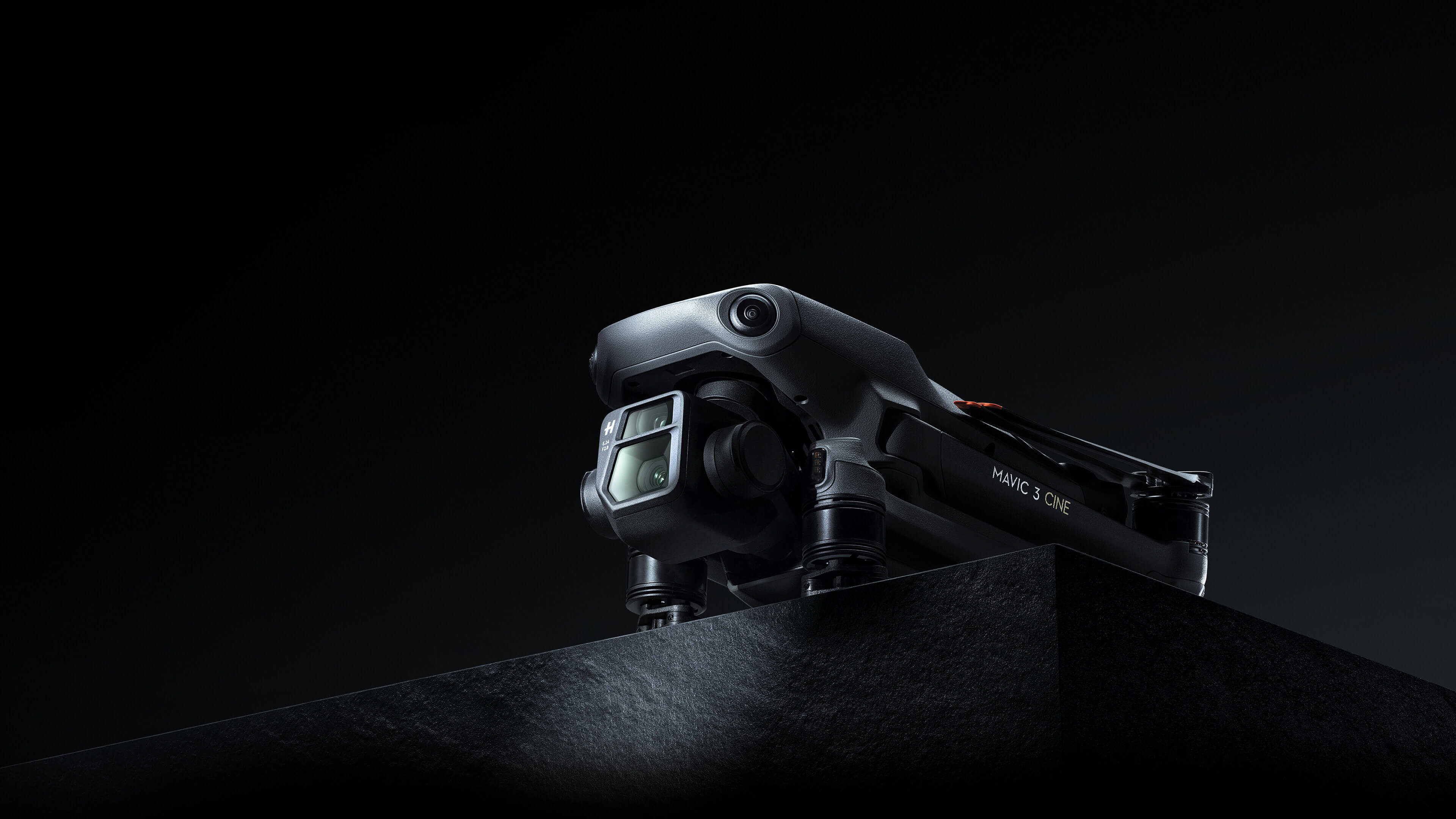
Hasselblad L2D-20c 4/3 CMOS Camera. Old Legend, New Chapter
The iconic Swedish brand Hasselblad designed and built the L2D-20c aerial camera just for DJI Mavic 3, embedding a professional-grade 4/3 CMOS in an unbelievably compact space. Rigorous Hasselblad standards are applied to both hardware performance and software algorithms, bringing imaging quality to an entirely new level.
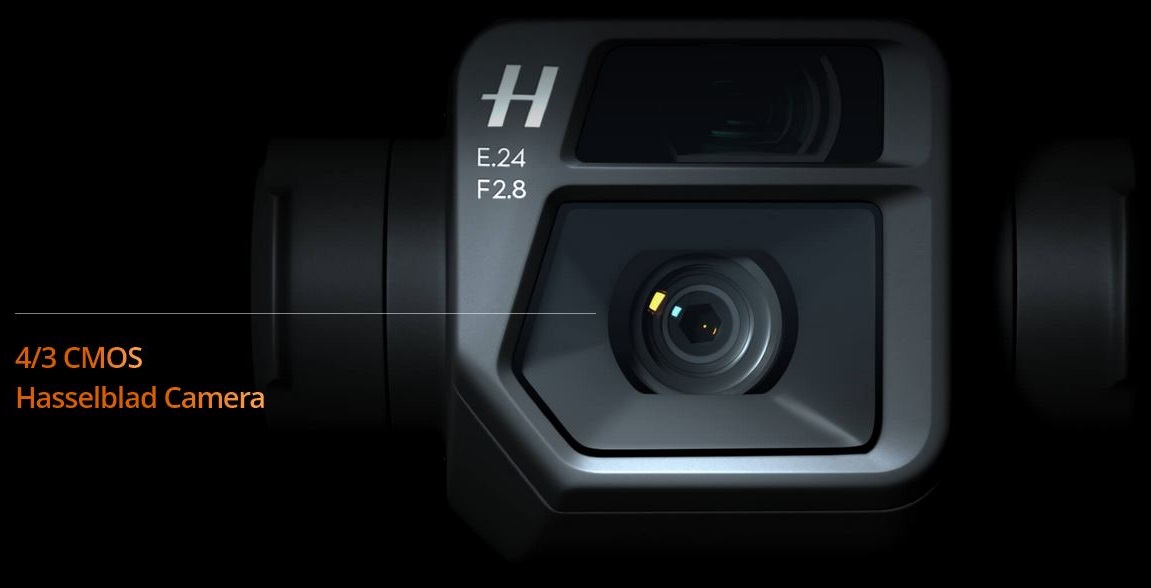
4/3 CMOS Built for Masterpieces
A larger image sensor not only gives Mavic 3 higher resolution and dynamic range, it also more effectively suppresses noise in low-light environments.
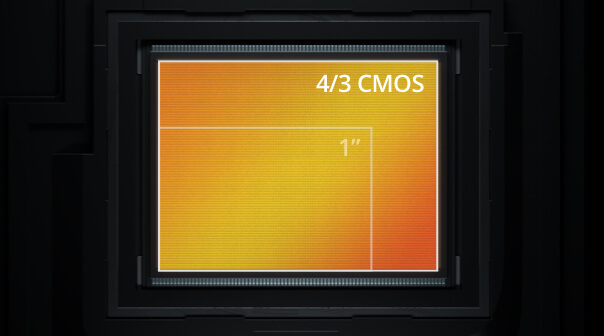
20MP 12.8-Stop Dynamic Range for Optimal Images
The 4/3 CMOS sensor comes with a high 12.8-stop dynamic range to retain more details in highlights and shadows, upgrading your work to a professional level.
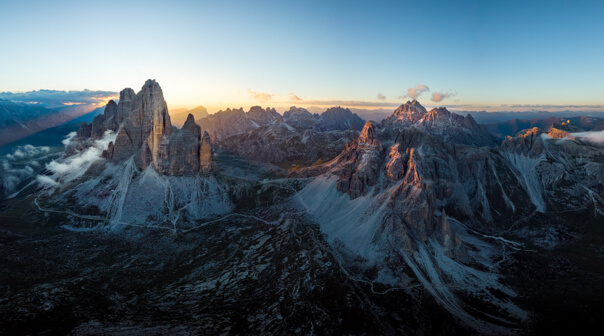
Adjustable Aperture For Every Scene
Aperture is adjustable according to the needs of different scenes. In low-light environments, the f/2.8 aperture lets more light in; when the lighting is sufficient, aperture can be adjusted to lower the shutter speed for recording smoother, more natural footage.
Wider FOV Gives You the Bigger Picture
Weighing less than 13 g, the 24mm equivalent lens not only supports autofocus, it also has a 84° FOV to capture more in every frame.
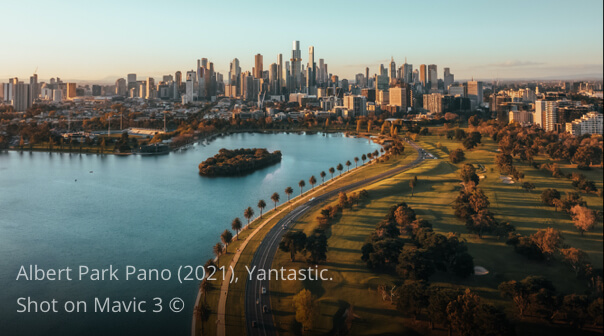
Faster Focusing with VDAF Technology
The Hasselblad camera on Mavic 3 features Vision Detection Auto Focus (VDAF) technology, which works with multiple vision sensors to utilize distance data and optimize focusing speed.
Hasselblad Natural Colour Solution
Mavic 3 features the Hasselblad Natural Colour Solution, the culmination of decades of photographic experience that delivers vivid, natural colours with the simple press of the shutter.
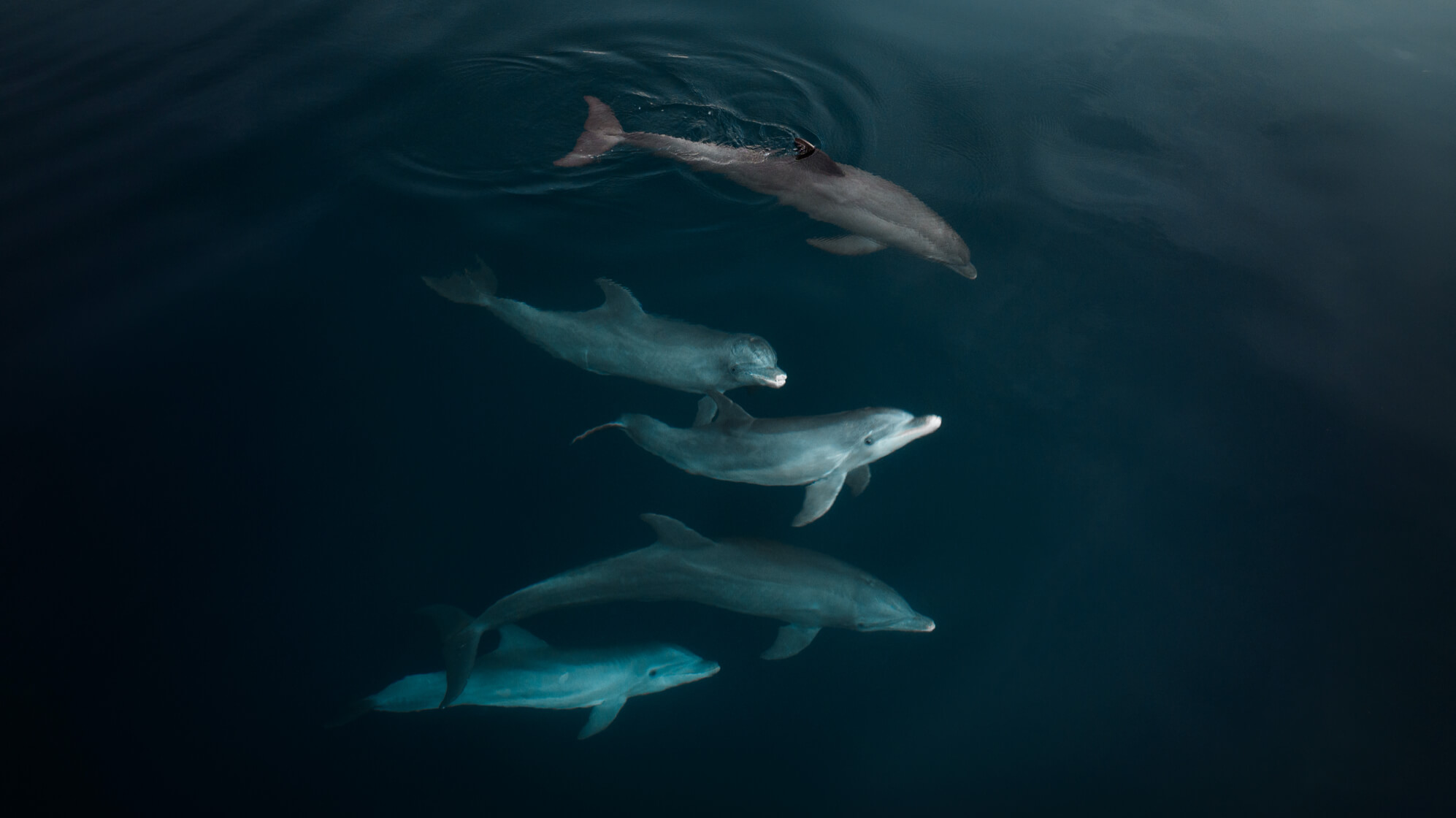
Excellence without Presets
Complex colour presets have never been part of Hasselblad’s philosophy and they aren’t on Mavic 3 either. Starting from the pixel level of sensors, Hasselblad developed the Hasselblad Natural colour solution (HNCS), a new perspective to handle a variety of scenes by easily reproducing accurate and natural colours.
Pixel Calibration for Ultimate Image Quality
To ensure Mavic 3 captures natural colours in the same way other Hasselblad cameras do, the L2D-20c lens adopts the same rigorous standards and has every pixel of the sensor calibrated with the HNCS embedded.
Accurate Colour Reproduction
During shooting, RGB colour data obtained by the sensor will be converted through Hasselblad's unique image processing algorithm and colour processing mode so that natural colours in various scenes can be precisely reproduced without any presets.
Results that Speak
Create professional imagery with the Hasselblad L2D-20c camera system.
Higher dynamic range allows for more natural transitions between highlights and shadows, preserving rich visual information with a greater sense of depth.
A larger sensor size keeps images clean in low light.
Professional Video Specifications
5.1K Video Recording
DCI 4K / 120 fps
Apple ProRes 422 HQ
10-bit D-Log
Mavic 3 not only records aerial videos at high resolutions and framerates, it also captures up to 1 billion colours with a 10-bit D-Log colour profile. This delivers more natural gradations of sky colouring with more details retained for greater flexibility in post-production.
Mavic 3 Cine supports Apple ProRes 422 HQ encoding with a maximum data rate of 3772 Mbps. It also supports a built-in 1TB SSD and 10Gbps lightspeed data cable to further facilitate professional filming and creation.
Tele Camera
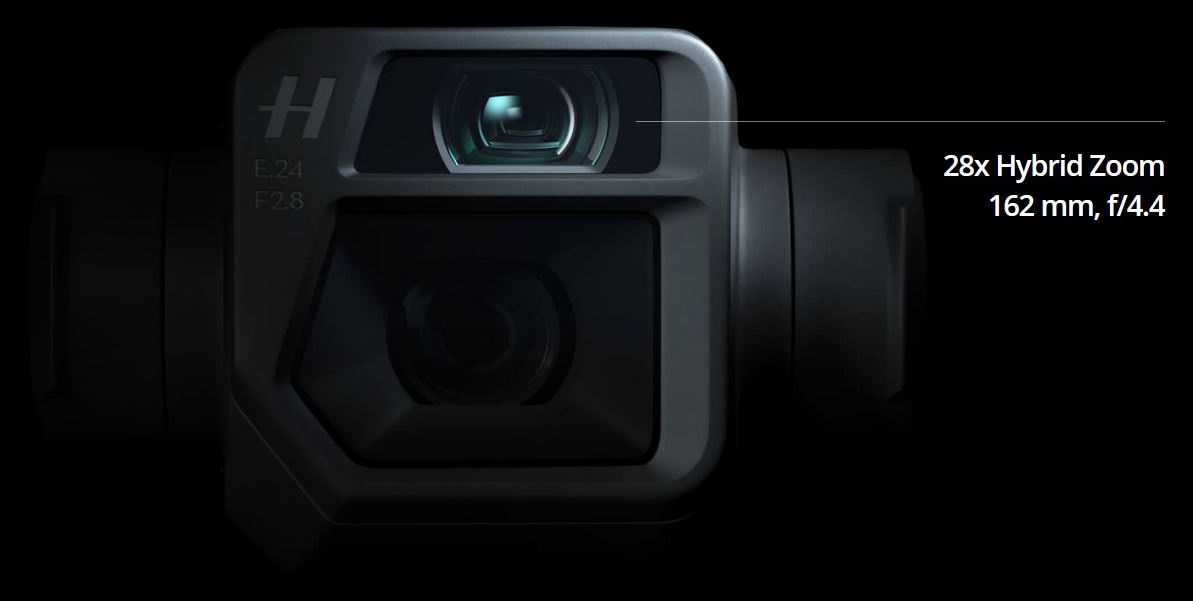
Explore Mode
Activate Explore mode to unlock Mavic 3's second camera – a unique tele camera that lets you effortlessly scout and plan your shots.
When scenes or subjects are far away, use the tele camera to zoom in and save time, or record from a distance without disturbing the subject.
Omnidirectional Obstacle Sensing
Mavic 3 helps you to enjoy collision-free flight so you can focus on getting the best shots possible. Multiple wide-angle vision sensors work seamlessly with a high-performance vision computing engine to sense obstacles in all directions precisely and plan a safe flight route that avoids them.
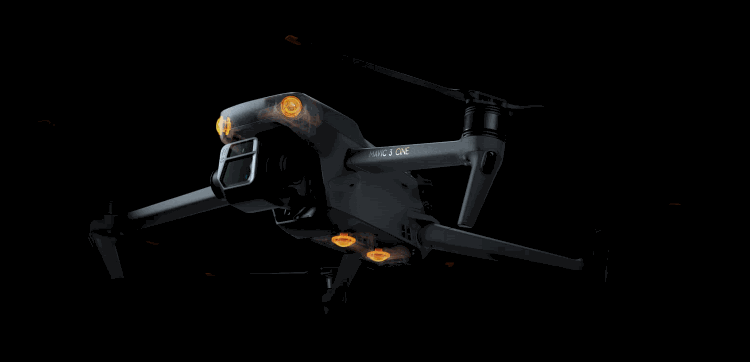
Advanced RTH
Always end on a high note with Advanced RTH. This updated auto-return function enables Mavic 3 to automatically determine the optimal route back to its home point and execute it quickly.
Whether activated by the user or triggered by signal loss, Mavic 3 can easily return to the home point safely in adequate lighting conditions.
Don't Just Fly. Enjoy - APAS 5.0
Mavic 3 makes flight more fun than ever with recording that is no longer interrupted by obstacles along the way. When flying, Mavic 3 continually senses objects in all directions and bypasses them quickly and smoothly.
Enjoy every flight, even in complex environments.
Record smooth footage, even when encountering obstacles.
Extended Flight Time
Execute every step, from flight route planning to composition and even record a timelapse video, all during a single flight. Compared with the previous generation, Mavic 3’s wind resistance has improved by 35%. It also uses motors and propellers with higher energy efficiency along with a high-capacity battery that extends the flight time to 46 minutes.
Fly Farther, See More
O3+ not only gives Mavic 3 an 8 km max transmission range in the UK, it also ensures higher transmission stability and less video lag, offering you greater peace of mind during flight.
Strong Interference - City Centres (approx. 1-2 km)
Medium Interference - Suburban Areas (approx. 1.5-5 km)
Low Interference – Open Landscapes (approx. 5-8 km)
FHD High-Framerate Transmission with Visible Smoothness
Thanks to the updated O3+ transmission system, Mavic 3 is DJI’s first-ever drone able to transmit a 1080p/60fps live feed. This means the camera view is displayed at specifications close to what the camera actually records. It also makes Mavic 3 more responsive to your control.
Extreme-Precision Positioning
The high-precision positioning of Mavic 3 not only ensures clearer long-exposure shots, it also helps record smoother time-lapse videos. In short, it makes Mavic 3 more stable every time it hovers.
Activetrack 5.0
Mastershots
What's Included?
Mavic 3 CINE that supports Apple ProRes 422 HQ video recording and includes on board 1TB high speed SSD x 1
Mavic 3 RC-Pro with built in screen x 1
Mavic 3 Intelligent Flight Battery x 3
Mavic 3 Low-Noise Propellers x 12
Mavic 3 Battery Charging Hub x 1
65W Charger x 1
Mavic 3 Convertible Carrying Bag x 1
Spare Remote Controller sticks x 2
Mavic 3 ND Filters Set (ND4/8/16/32) x 1
Mavic 3 Storage Cover x 1
USB A to Type C Cable x 1
Mavic 3 ND Filters Set (ND64/128/256/512) x 1
Mavic 3 10Gbps Lightspeed Data Cable x 1
Product
Compared with DJI Mavic 2, what major upgrades does Mavic 3 have?
DJI Mavic 3 is DJI’s latest flagship consumer drone. Compared with Mavic 2, Mavic 3 has substantially upgraded camera performance, integrating a 4/3 CMOS Hasselblad camera and a lightweight 24mm equivalent tele camera. Mavic 3 is capable of capturing 5.1K/50fps and 4K/120fps videos, and Mavic 3 Cine even supports Apple ProRes 422 HQ encoding, offering higher image quality and greater flexibility during post-processing. In addition to the camera system, Mavic 3 also delivers a comprehensively upgraded flight experience. Flight time has been extended to 46 minutes, and the new O3+ extends video transmission range to a maximum distance of 8 km. Obstacle sensing has been developed into a truly omnidirectional system, with a more powerful APAS 5.0 and Advanced RTH to give users greater peace of mind during flight.
What app is required for using DJI Mavic 3?
The DJI Fly app.
How many versions does the DJI Mavic 3 Series have and what are the differences between them?
DJI Mavic 3 comes in two versions: DJI Mavic 3 and DJI Mavic 3 Cine. Compared with the Mavic 3, DJI Mavic 3 Cine supports Apple ProRes 422 HQ encoding and comes with a built-in 1TB SSD for high-speed data storage.
Does the DJI Mavic 3 Cine support the DJI RC-N1 Remote Controller?
Yes.
Does DJI Mavic 3 support the DJI Goggles or the DJI Motion Controller?
No.
Camera
What should I pay attention to when using the built-in gimbal lock on DJI Mavic 3?
DJI Mavic 3 features a built-in gimbal lock to prevent the 3-axis gimbal and camera from shaking, adding an additional layer of safety during transportation and storage. Precautions for use:
1. The normal operating temperature of the gimbal lock is -10° to 40° C. If temperatures are outside of this range, it may fail to lock or unlock properly. You will be prompted by the DJI Fly app to use it within the temperature range. For emergency use in special situations, you can manually twist the three axes without damaging the gimbal itself, but this measure is not recommended.
2. The built-in gimbal lock may become unlocked due to external impact. In this case, power on the aircraft and then power off to lock again.
3. After the gimbal is locked, vibrations in each axis may occur.
What is the most efficient way to export files from the built-in SSD of DJI Mavic 3 Cine?
Use the DJI 10 Gbps Lightspeed Data Cable in the box to connect the aircraft to your computer via the USB-C port. Make sure the write speed of your storage device is greater than 700MB/s. Other data cables are not recommended since they may take longer to transfer files as high-speed transmission may not be supported.
How can I use DJI Mavic 3’s tele camera?
The tele camera is available only when using Explore mode. Once Explore mode is enabled and the camera zoom exceeds 7x, Mavic 3 will switch to the tele camera automatically.
Does Explore mode support Pro mode?
No.
Can I take RAW photos with Explore mode?
No.
Does Explore mode support video recorded with Apple ProRes encoding?
No.
Remote Controller and Video Transmission
What is the transmission range of DJI Mavic 3?
When using the DJI RC Pro or DJI RC-N1 Remote Controller, the maximum transmission range is 8 km.
How can I set the video transmission feed to 48/50/60fps?
Once video recording is set to 30fps or above at any resolution, the video transmission live feed framerate will automatically switch to 48/50/60fps depending on the mobile phone decoding capability and transmission bandwidth.
Does either version of Mavic 3 support simultaneous control by multiple remote controllers?
No.
Does the DJI RC-N1 remote controller support O3+ transmission when used with the Mavic 3 aircraft?
Yes.
1. Once it has been linked with DJI Mavic 3 aircraft, the DJI RC-N1 remote controller will automatically perform targeted firmware optimization and updating. Just like the DJI RC Pro, the RC-N1 supports O3+ image transmission; 2. In an unobstructed environment free of interference, both controllers can support a maximum transmission range of 15 km with FCC compliance; 3. Both 1080p/60fps transmission and O3+/4G hybrid transmission are fully supported by the two remote controllers.
When used with different aircraft hardware configurations, both remote controllers will automatically select the corresponding firmware version for updating and support the following transmission technologies enabled by the hardware performance of the linked aircraft models:
a. DJI Mini 2/ DJI Mavic Air 2: O2
b. DJI Air 2S: O3
c. DJI Mavic 3: O3+
What advantages does the DJI RC Pro have compared with the DJI RC-N1?
Compared with DJI RC-N1, the DJI RC Pro features:
1. Easy setup and quick start, which means the remote controller is instantly linked to the aircraft after powering on and there is no need to worry about interference from calls or text messages during flight.
2. The built-in high-bright screen ensures constant high-bright display all day, without the risk of lowered screen brightness caused by overheating.
3. DJI RC Pro is also integrated with a powerful processing platform for a more stable and smoother system operation. It also has excellent sound and image quality and supports video expansion output.
4. Dual-spring controller sticks for a smoother and more precise control experience.
5. Compared with the 1T2R antenna configuration of DJI RC-N1, DJI RC Pro uses a 2T4R configuration that is more resistant to interference and delivers more stable transmission performance in urban areas with signal interference.
6. A dial has been added to DJI RC Pro exclusively for camera parameter adjustments, supporting more customizable buttons for more convenient operation.
Flight Performance
Were there any upgrades to the propellers used on DJI Mavic 3?
The propeller structure adopts a new design, with the edges made of a softer material. This not only reduces noise during flight, but also causes less damage to people or objects in the event of an accident.
What should I pay attention to when using the DJI Mavic 3 propellers?
Replace the propellers in a timely manner to ensure safety, especially if any propeller is damaged or misshaped.
How do I attach DJI Mavic 3 propellers correctly?
Attach the propellers with grey markings on the motors with the same markings, and attach the other two without grey markings on the corresponding motors. The DJI Fly app will also send a prompt before takeoff.
How is the flight time of DJI Mavic 3 measured?
The flight time was measured in a controlled test environment. Specific test conditions are as follows: No wind, at sea level, constant flight speed of 32.4 kph, APAS off, AirSense off, camera parameters set to 1080p/24fps, video mode off, and flying from 100% battery to 0% battery. Results may vary depending on environment, usage scenario, and firmware version.
Flight Safety and Obstacle Sensing
Compared with the previous generation, what upgrades does the omnidirectional sensing system on DJI Mavic 3 have?
DJI Mavic 3 can detect obstacles in all directions with extreme precision. Multiple sensing cameras with a wider range of detection help Mavic 3 respond to obstacles earlier. In a well-lit environment, Mavic 3 can avoid obstacles faster and more smoothly, capturing stable footage safely even when flying laterally or backward.
What improvements does ActiveTrack 5.0 have compared with the previous version?
ActiveTrack 5.0 tracks subjects whether the aircraft is moving forward, backward, left, or right. Embedded with the newest subject recognition technology, ActiveTrack 5.0 uses multiple vision sensors simultaneously to recognize a subject, differentiate it from other objects, and lock the subject in frame. Mavic 3 is able to track in all directions and adjust tracking angles smoothly for more natural results. Thanks to new environment and subject sensing algorithms, Mavic 3 responds earlier to subject movements and environment information, and plans a more optimum tracking route in advance to record smooth and stable footage.
What improvements does Advanced RTH have compared with the previous version?
Compared to the 20 meters of its predecessor, DJI Mavic 3 has a maximum forward-sensing distance of 200 meters during RTH. During flight, Mavic 3 will use advanced environmental sensing technology to determine the safest, most energy-efficient flight route to return the drone to its home point.
Intelligent Features
Are there any upgrades to the QuickTransfer of Mavic 3 compared with the previous version?
With the new Wi-Fi 6 protocol, data transmission is even faster, with download speeds reaching up to 80MB/s. In addition, compared to DJI Mini 2, Mavic 3 automatically selects the fastest transmission mode based on the wireless environment without switching to Wi-Fi mode manually, making it easier to use.
Accessories
How can I use the DJI 65W Portable Charger?
The DJI 65W Portable Charger comes with a 65W USB-C cable to charge Mavic 3's battery. With another USB-A port and a USB-C data cable included in the package, it can also charge the remote controller at the same time. It is recommended to use a standard USB-C cable to charge the Mavic 3 intelligent flight battery.
How long does it take to fully charge a DJI Mavic 3 Intelligent Flight Battery?
Approximately 96 minutes when using the DJI 65W Portable Charger.
What are the highlights of the DJI Convertible Carrying Bag?
The DJI Convertible Carrying Bag can be converted between a shoulder bag and backpack to suit users' portability needs.
1. The shoulder bag configuration provides enough space for Mavic 3 and its accessories, offering a more convenient shape that makes items easily accessible.
2. The backpack configuration provides enough space for Mavic 3 and its accessories, along with a 16-inch laptop and other small items for daily use, making it perfect for short trips.
Can I use other chargers with USB-C ports to charge the Mavic 3 battery?
Yes. However, to ensure charging efficiency, we still recommend using the DJI 65W Portable Charger. Other chargers at 60W or above supporting PPS/PD protocol are also recommended.
Can I charge Mavic 3 directly through the built-in USB-C port of the aircraft body?
Yes.
| Aircraft | |
| Max Flight Distance: | 30 km |
| Max Hovering Time: | 40 minutes |
| Max Service Ceiling Above Sea Level: | 6000 m |
| Max Wind Resistance: | 12 m/s |
| Weight: | Mavic 3: 895 g Mavic 3 Cine: 899 g |
| Max Ascent Speed: | 1 m/s (C mode) 6 m/s (N mode) 8 m/s (S mode) |
| Max Descent Speed: | 1 m/s (C mode) 6 m/s (N mode) 6 m/s (S mode) |
| Hover Accuracy: | Vertical: ±0.1 m (with Vision Positioning); ±0.5 m (with GNSS Positioning) Horizontal: ±0.3 m (with Vision Positioning); ±0.5 m (with High-Precision Positioning System) |
| Max Speed: | 5 m/s (C mode) 15 m/s (N mode) 19 m/s (S mode) |
| Operating Temperature: | -10° to 40° C |
| Max Angular Velocity: | 200°/s |
| Max Tilt Angle: | 25° (C mode) 30° (N mode) 35° (S mode) |
| Diagonal Distance: | 380.1 mm |
| Dimensions: | Folded (without propellers) 221×96.3×90.3 mm (Length×Width×Height) Unfolded (without propellers) 347.5×283×107.7 mm (Length×Width×Height) |
| Internal Storage: | Mavic 3: 8 GB (available space is approx. 7.2 GB) Mavic 3 Cine: 1TB (available space is approx. 934.8 GB) |
| Max Flight Time: | 46 minutes |
| GNSS: | GPS + Galileo + BeiDou |
| Remote Controller | |
| Supported Mobile Device Size: | 180 × 86 × 10 mm (Length × Width × Height) |
| Operating Temperature: | 0° to 40° C |
| Transmission System: | When used with different aircraft hardware configurations, DJI RC-N1 Remote Controllers will automatically select the corresponding firmware version for updating and support the following transmission technologies enabled by the hardware performance of the linked aircraft models: a. DJI Mini 2/ DJI Mavic Air 2: O2 b. DJI Air 2S: O3 c. DJI Mavic 3: O3+ |
| Supported USB Port Types: | Lightning, Micro USB, USB-C |
| Battery Life: | Without charging any mobile device: 6 hr; when charging mobile device: 4 hr |
| Transmitter Power (EIRP): | 2.4 GHz: ≤26 dBm (FCC), ≤20 dBm (CE/SRRC/MIC) 5.8 GHz: ≤26 dBm (FCC/SRRC), ≤14 dBm (CE) |
| Battery | |
| Battery Type: | LiPo 4S |
| Capacity: | 5000 mAh |
| Charging Temperature: | 5° to 40° C |
| Energy: | 77 Wh |
| Voltage: | 15.4 V |
| Weight: | 335.5 g |
| Charging Voltage Limit: | 17.6 V |
| Camera | |
| Max Image Size: | Main Unit: 5280 × 3956 |
| Max Video Bitrate: | H.264/H.265 Bitrate: 200 Mbps |
| Video Formats: | Mavic 3: MP4/MOV (MPEG-4 AVC/H.264, HEVC/H.265) Mavic 3 Cine: MP4/MOV (MPEG-4 AVC/H.264, HEVC/H.265), MOV (Apple ProRes 422 HQ) |
| Video Resolution: | Apple ProRes 422 HQ 5.1K: 5120×2700@24/25/30/48/50fps DCI 4K: 4096×2160@24/25/30/48/50/60/120*fps 4K: 3840×2160@24/25/30/48/50/60/120*fps H.264/H.265 5.1K: 5120×2700@24/25/30/48/50fps DCI 4K: 4096×2160@24/25/30/48/50/60/120*fps 4K: 3840×2160@24/25/30/48/50/60/120*fps FHD: 1920×1080p@24/25/30/48/50/60/120*/200*fps * Framerates above are recording framerates. Videos will be played as slow-motion videos. |
| Sensor: | 4/3 CMOS, Effective pixels: 20 MP |
| Lens: | FOV: 84° Format Equivalent: 24 mm Aperture: f/2.8 to f/11 Focus: 1 m to ∞ (with autofocus) |
| ISO Range: | Video: 100-6400 Still Image: 100-6400 |
| Shutter Speed: | Electronic Shutter: 8-1/8000 s |
| Still Photography Modes: | Single shot: 20MP Photos Automatic Exposure Bracketing (AEB): 20 MP, 3/5 bracketed frames at 0.7 EV Timed: 20 MP, 2/3/5/7/10/15/20/30/60 s |
| Supported File Formats: | exFAT |
| Sensing System | |
| Forward: | Measurement Range: 0.5-20 m Detection Range: 0.5-200 m Effective Sensing Speed: Flight Speed ≤ 15m/s FOV: Horizontal 90°, Vertical 103° |
| Sensor: | Omnidirectional binocular vision system, supplemented with an infrared sensor at the bottom of the aircraft |
| Backward: | Measurement Range: 0.5-16 m Effective Sensing Speed: Flight Speed ≤ 12m/s FOV: Horizontal 90°, Vertical 103° |
| Downward: | Measurement Range: 0.3-18 m Effective Sensing Speed: Flight Speed ≤ 6m/s FOV: Front and Back 130°, Left and Right 160° |
| Operating Environment: | Forward, Backward, Left, Right, and Upward: Surface with a clear pattern and adequate lighting (lux>15) Downward: Surface with a clear pattern and adequate lighting (lux >15). Diffuse reflective surface with diffuse reflectivity>20% (e.g. wall, tree, person) |
| Upward: | Measurement Range: 0.2-10 m Effective Sensing Speed: Flight Speed ≤ 6m/s FOV: Front and Back 100°, Left and Right 90° |
| Lateral: | Measurement Range: 0.5-25 m Effective Sensing Speed: Flight Speed ≤ 15m/s FOV: Horizontal 90°, Vertical 85° |
| Gimbal | |
| Controllable Range: | Tilt: -90° to 35° Pan: -5° to 5° |
| Stabilisation: | 3-axis motorized (tilt, roll, pan) |
| Angular Vibration Range: | ±0.007° |
| Mechanical Range: | Tilt: -135° to 100° Roll: -45° to 45° Pan: -27° to 27° |
| Max Controllable Speed: | 100°/s |
| Zoom Camera | |
| Sensor: | 1/2-inch CMOS |
| Lens: | FOV: 15° Format Equivalent: 162 mm Aperture: f/4.4 Focus: 3 m to ∞ |
| Shutter Speed: | Electronic Shutter: 2-1/8000 s |
| Max Image Size: | 4000×3000 |
| ISO Range: | Video: 100-6400 Still Image: 100-6400 |
| Photo Modes: | Single shot: 12MP Photos |
| Digital Zoom: | 28x |
| Video Resolution: | H264/H.265 4K: 3840 × 2160 @ 30 fps FHD: 1920 × 1080 @ 30 fps |
| Video Format: | MP4/MOV (MPEG-4 AVC/H.264, HEVC/H.265) |
| Photo Format: | JPEG |
| Car Charger | |
| Input: | Car Power Input: 12.7-16 V⎓6.5 A, rated voltage 14 V DC |
| Output: | USB-C: 5.0 V⎓5.0 A/9.0 V⎓5.0 A/12.0 V⎓5.0 A/15.0 V⎓4.3A/20.0 V⎓3.25 A/5.0~20.0 V⎓3.25 A USB-A: 5 V⎓2 A |
| Rated Power: | 65 W |
| Charging Time: | Approx. 96 minutes |
| Charging Temperature Range: | 5° to 40° C |
| Storage | |
| SSD Specs: | Capacity: 1 TB Max Read Speed: 700MB/s* Max Write Speed: 471MB/s* |
| Recommended Micro SD Cards: | Standard bitrate video recommended microSD Cards: H.265 : 5.1K : 5120x2700@24/25/30/48/50fps DCI 4K : 4096x2160@24/25/30/48/50/60/120fps 4K: 3840x2160@24/25/30/48/50/60/120fps FHD : 1920x1080@24/25/30/48/50/60/120/200fps H.264 : DCI 4K : 4096x2160@24/25/30/48/50/60fps 4K : 3840x2160@24/25/30/48/50/60fps FHD: 1920x1080@24/25/30/48/50/60/120/200fps SanDisk Extreme Pro 64G v30 A2 microSDXC SanDisk Extreme Pro 128G v30 A2 microSDXC SanDisk Extreme Pro 256G v30 A2 microSDXC SanDisk Extreme Pro 400G v30 A2 microSDXC SanDisk High Endurance 64G v30 XC I microSDXC SanDisk High Endurance 128G v30 XC I microSDXC SanDisk High Endurance 256G v30 XC I microSDXC SanDisk Extreme 128G v30 A2 microSDXC SanDisk Extreme 256G v30 A2 microSDXC SanDisk Extreme 512G v30 A2 microSDXC Lexar 667x 64G microSDXC Lexar 667x 128G microSDXC Lexar 667x 256G microSDXC Lexar High Endurance 64G V30 XC I microSDXC Lexar High Endurance 128G microSDXC Samsung Evo Plus 64G microSDXC Samsung Evo Plus 128G microSDXC Samsung Evo Plus 256G microSDXC Samsung Evo Plus 512G microSDXC" High bitrate video recommended microSD Cards: H.264 : 5.1K: 5120x2700@24/25/30/48/50fps DCI 4K: 4096x2160@120fps 4K : 3840x2160@120fps SanDisk Extreme Pro 64G v30 A2 microSDXC SanDisk Extreme Pro 128G v30 A2 microSDXC SanDisk Extreme Pro 256G v30 A2 microSDXC SanDisk Extreme Pro 400G v30 A2 microSDXC SanDisk High Endurance 64G v30 XC I microSDXC SanDisk High Endurance 128G v30 XC I microSDXC SanDisk High Endurance 256G v30 XC I microSDXC Lexar High Endurance 64G V30 XC I microSDXC Lexar High Endurance 128G microSDXC Lexar 667x 64G microSDXC Lexar 667x 128G microSDXC Lexar 667x 256G microSDXC MicroSD Cards are not capable of recording Apple ProRes 422 HQ codec. |
| Charger | |
| Input: | 100-240 V AC, 47-63 Hz, 2.0 A |
| Rated Power: | 65 W |
| USB Charging Ports: | USB-C: 5.0 V⎓5.0 A/9.0 V⎓5.0 A/12.0 V⎓5.0 A/15.0 V⎓4.3 A/20.0 V⎓3.25 A/5.0~20.0 V⎓3.25 A USB-A: 5 V⎓2 A |
| Charging Hub | |
| Input Voltage: | USB-C: 5-20 V⎓5.0 A max |
| Output Voltage and Current: | Battery: 12-17.6 V⎓5.0 A max |
| Rated Power: | 65 W |
| Charging Type: | Charges three batteries in sequence. |
| Charging Temperature Range: | 5° to 40° C |



